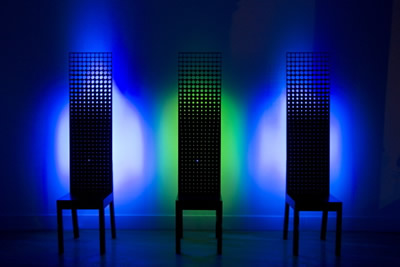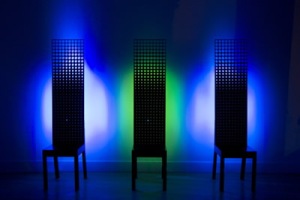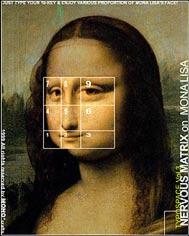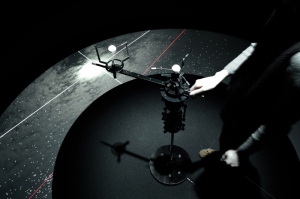Open Source, Computer Vision and More November 25, 2008
Posted by sm1001 in class.add a comment
Onyx
There is a open source VJ software Onyx:
http://www.onyx-vj.com/?page_id=10
Pure Data
http://www.the-demos.com/2008/03/25/pure-data-gem-visual-demostration/
http://hk.youtube.com/watch?v=ipzVmMcQPd0
http://www.flickr.com/photos/thedemos/sets/72157605174502653/
http://www.flickr.com/photos/thedemos/sets/72157604103867273/
http://www.the-demos.com/pure-data-and-gem-links-for-sm1205/
Processing
Arduino
ARToolkit
http://www.hitl.washington.edu/artoolkit/
Reactable
Face Detection
Computer Vision, Virtual Reality, Augmented Reality November 17, 2008
Posted by sm1001 in class.add a comment
Computer Vision
“Computer vision is the science and technology of machines that see. As a scientific discipline, computer vision is concerned with the theory for building artificial systems that obtain information from images. The image data can take many forms, such as a video sequence, views from multiple cameras, or multi-dimensional data from a medical scanner.” – wikipedia
Volume, UVA, 2005
Volume in Hong Kong
Face Detection
Virtual Reality
Johnny Lee
Surface Tension, Rafel L.Hammer
Bubbles, Wolfgang Muench/Masaki Fujihata, 2001
http://hosting.zkm.de/wmuench/bub/video
Small Fish, Wolfgang Muench/Masaki Fujihata, 2001
Messa Di Voice, Golan Levin and Zach Lieberman, 2003 (ars electronica, 2003)
Manual Input Session, Golan Levin and Zach Lieberman
Drawn
Augmented Reality
“Augmented reality (AR) is a field of computer research which deals with the combination of real-world and computer-generated data. At present, most AR research is concerned with the use of live video imagery which is digitally processed and “augmented” by the addition of computer-generated graphics. Advanced research includes the use of motion-tracking data, fiducial marker recognition using machine vision, and the construction of controlled environments containing any number of sensors and actuators.”
levelHead, Julian Oliver, 2007 (ars electronica 2007, interactive art)
Total Immersion
Total Immersion
[yourube=http://www.youtube.com/watch?v=o5ytkOgEaMU]
Illusion / Perspective with Digital Media
OLE Coordinate System, 藤 木淳, 2006 (japan media art 2006, ars electronca 2007, interactive art)
PSP game of OLE Coordinate System
Web version:
http://www.nhk.or.jp/digista/blog/works/20070517_fujiki/index.html
Halluici
Hypertext, Cybertext: Generative Arts November 17, 2008
Posted by sm1001 in class.add a comment
Let’s VJ first!
Master do it: DVD
- D-Fuse
- Light Surgeon
You do it:
Tiction, music sequencer
http://www.tinkthank.net/software/tiction/
Game of Life Sequencer (run with processing)
http://ruinwesen.com/support
Hypertext Fiction
Judy Malloy: Revelations of Secret Surveillance
http://www.well.com/user/jmalloy/gunterandgwen/titlepage.html
8 Minute, Martha Conway
http://ezone.org/ez/e7/articles/conway/8min.html
ebbflux: machine text
http://www.ebbflux.com/
Eastgate Hypertext
http://www.eastgate.com/ReadingRoom.html#
Writing Machine Collective
http://www.writingmachine-collective.net/news.html
Virtual Exhibition
http://www.writingmachine-collective.net/virtual/index.html
Digital Media Interface November 11, 2008
Posted by sm1001 in class.add a comment
I try to divide the interactive digital media interface into two types:
- Tangible
- Intangible
Interaction – Interface
In between this the interaction, no matter human-human or human-computer interaction, we need a medium in between to connect both parties together and having the interactive relationship.
MEDIUM that we are talking is Interface.
Last week we have gone through a lot of the examples, both tangible and intangible.
But what is a good Interface? And how a good Interface design related the interaction?
Good interface design can enhance the interaction between the computer and human, think about the following issues:
- Immediacy (feedback, response)
- Learning Curve (ease to use)
- Extension ability (collective?)
Immediacy
Some time the audience give up trying to interact with an interactive digital media. For example you might not want to stay in a web site that need to wait for the feedback even after only a single mouse click. (especially those stupid animation transition effects).
We are not saying the interface should provide a very straight forward feedback to the audience/user, but giving the immediate feedback to the audience’s action. At least, the audience/user know he/she still on the track, the system is responsing the action. That’s why we have loading bar. Because we know it may take sometimes to load everythings, we tell our audience “yes we are processing your request” IMMEDIATELY.
Pong Mechanik
The Art and Science of Baby Names
http://www.babynamewizard.com/voyager
Learning Curve
Sometimes an interesting interaction, especially those with intangible interface, may enhance the interaction process and giving the audience/user a memorable interaction process. But the interface (interaction method) may be new for the audience or the user, they may need sometimes to learn how to interact with.
Remember the Uniqulo Grid? That is playing the gesture. You need to learn how to control it.
That’s why we have menu to teach our audience/user to control the interface. But we all hate reading menu. Especailly in the exhibition, it is so stupid to let the audience standing for 5 mins to read the instruction and use another 10 mins to learn how to play. I probably will give up and skip this work.
Familiar interface control sometimes work. For example if you see a pen, you ASSOCIATE that you can pick up the pen and draw something.
Dune 4.0 , Daan Roosegaarde
Mario by Hand
Shadow Monster, Philip Worthington
http://www.worthersoriginal.com/viki/#page=shadowmonsters
levelHead, Julian Oliver
Royal Appointment, Moritz Waldemeyer

Extension Ability
Digital Media has a very amazing ability that is the life cycle. It may becomes totally different piece but with all the system behind is the same.
A good interface design can even seperately and becoming the interface of another application/game/work/etc.
Reactable
London College of Fashion Graduate Show, Moving Brands
Khronos Projector, Alvaro Cassinelli
Graffiti Research Lab
http://fffff.at/fuckflickr/HONG_KONG_2007/
http://fffff.at/fuckflickr/QUEENIE_DOES_HONG_KONG/
Dialtone, Golan Levin
Multitouch, Jeff Han
JazzMutant
Kanye West x Daft Punk @ Grammy 2008
Blogging and Audiovisual November 10, 2008
Posted by sm1001 in Uncategorized.add a comment
Blogging
Way to go Blogger (say goodbye to Xanga please!)
Even though your sweb space is super small (only 600MB@!#) , but we can build a blog on this.
Blogger (blogspot) can be hosted in their free hosting or your own hosting. WordPress is good also. But why not WordPress?
The database of WordPress uses PHP which the SWEB in SCM does not support.
Blogger use XML, which is just a simple file containing data. SWEB in SCM supports this.
Let’s make one in SWEB.
Let’s VJ
Even Master like Peter Greenaway do VJ, are you ready?
Thousands way that you can be a VJ, or a better terms, Audiovisual artist.
Ways to do VJ
Onyx (Open source)
http://www.onyx-vj.com/?page_id=10
ArKaos
http://www.arkaos.net/
Modul8
Master do VJ/AudioVisual
- Kraftwerk
- Light Surgeon
- d.v.d
(http://vimeo.com/1981069) - EBN (http://hk.youtube.com/watch?v=PUDR9RckfEU)
- Ryuichi Sakamoto x Alva Noto
(http://hk.youtube.com/watch?v=7az9jgc5wz8)
(http://vimeo.com/1266592) - Ryuichi Sakamotot x Toshio Iwai
(http://hk.youtube.com/watch?v=JgifXO0z7Us&feature=related)
(http://hk.youtube.com/watch?v=3a9dOoLU5xQ)
(http://www.aec.at/en/archives/prix_archive/prix_projekt.asp?iProjectID=2494)
Ways to know VJ:
Vj: Audio-visual Art + VJ culture
http://shop.dfuse.com/span-stylefont-weight-boldvj-audio-visual-artbr–vj-culture-spanbook-1-p.asp
VJ books
http://www.vjbook.com/
Addition Link
Kontakstation
Interactivity , Interaction Design and Installation November 4, 2008
Posted by sm1001 in Uncategorized.add a comment
“…Interaction is the most common acticity between humans. They are interactive living beings who make objects, talk with each other, write texts and pass these on to others…”
-Masaki Fujihata, Hierarchies of Communication, ZKM
We are in this class: Introduction to Digital Media, interactivity happens with digital media.
“Computer is just a tool. It still depends on the users to use it in a good or bad way”
“Technology shapes our life. New form of interactive technology will enable new practices of works, entertainment, etc.”
We have 4 roles in the interaction process:
- Audience – broadcast mode of communication
- User – functional system, e.g. Product design, software
- Participant – active role to co-create something
- Player – performative role to assert identity
Relation between the action taker and feedback to the action taker…
Forms of Interactivity with new media
- One form of interactivity relies on replicating the interpersonal and its value for the appropriation of meaning.
New Media forms are thus modeled on Providing the possibility of exchange and interplay
- The second form of interactivity privileged in new media forms is their capacity to provide complete environments. The objective of these new media forms is a kind of immersive state.
- The third direction in the development and use of interactivity was a kind of representation of difference from the forms of interaction that past media forms presented.
It promise of change and empowerment intersected with the audience’s desire for greater control of its media forms.
Principles of New Media (by Lev Manovich)
- Numerical representation – created from scratch on computers, converted from analog media (digitzation)
- Modularity – object-oriented authoring software, structured programming practice
- Automation –
- Variability
- Transcoding
This is super abstract right?
Take a simpler way, let’s explore different kind of interactive media.
- Tangible Interface
- Intangible Interface
Tangible Interface
Basic: Mouse and Keyboard
Audiovisual Environment Suite, Golan Levin, 2000 (Ars electronca 2000, interactive arts)
http://www.babynamewizard.com/voyager
More: With other hardware/controller

Block Jam, by Sony Interaction Lab (Ars Electronica 2003, interactive arts)
Tenori-On, Toshio Iwai
Tuskuba Series, Maywa Denki (Ars Electronica 2003, Interactive arts)
a plaything for the great observers at rest, 平川紀道 (Ars electronica 2008, Interactive Arts)
Tagtools
http://www.tagtool.org/category/videos/
music box, Mok Jin-Yo (Ars electronica Festival 2005)
Moving Mario, Keith Lam (Ars Electronica 2008, Interactive Arts)
[http://www.youtube.com/watch?v=VsjoN7xWY5k]
Pong Mechanik
Graffiti Research Lab (next time)
Reactable (next time)
levelhead (next time)
OLE Coordinate System (next time)
mobile device (next time)
Khrono Projectors (next time)
DialTones (next time)
Drawn (next time)
Intangible Interface
n-cha(n)t, David Rokeby (Ars Electronica 2001, Interactive Arts)
TextRain, Camile Utterback (Ars Electronica 2000, Interactive Arts)
http://www.worthersoriginal.com/viki/#page=shadowmonsters
Shadow Monster, Philip Wasington, 2006
[http://hk.youtube.com/watch?v=Nr6y2lfc7Co]
Big Shadow, 前川峻志, 2006
Kick Ass Kung Fu
BrainBall, Smart Studio (Ars Electronica 2001, Interactive Arts)
Access, Marie Sester (Ars Electronica 2003, Interactive Arts)
touch echo, Bruehlsche Terrasse (Ars Electronica 2008, Interactive Arts)
Moving Mario By Hand

By Royal Appointment, Moritz Waldemeyer
Dune 4.0, Daan Roosegaarde, 2006
Mutlitouch Table (next time)
JazzMatuant (next time)
Openness VS Restriction
- Learning Curve: Immediacy
- Well-designed Restriction
- Level of Interactivity
- Roles of interfaces?
Web Authoring October 27, 2008
Posted by sm1001 in Uncategorized.add a comment
We use Adobe Dreamweaver.
Network Media October 21, 2008
Posted by sm1001 in class.add a comment
Something good looking
中村勇吾
http://yugop.com/
http://tha.jp/
Highlight Projects:
FFFFOUND!
Ecotonoha / NEC
Kaze to Desktop
Design and Elastic Mind (MoMA)
Softbank Hello World
Uniqlo Grid
UT Loop!
[http://www.youtube.com/watch?v=cd5iNYAnqL4]
Uniqlo Explorer
Francis Lam
http://db-db.com
Something play with the original of the network
net.art
http://www.net-art.org/
Telegarden, Ken Goldberg and Joseph Santarromana, 1995~2004
http://www.usc.edu/dept/garden/
The World’s First Collective Sentence, Douglas Davis, 1994
http://www.whitney.org/arport/collection/index.shtml
Listening Post, Mark Hansen and Ben Rubin, 2002
http://www.earstudio.com/projects/listeningpost.html
The Dumpster,Golan Levin with Kamal Nigam and Jonathan Feinberg
http://artport.whitney.org/commissions/thedumpster/dumpster.shtml
Something extending the network
Web 2.0
Google Map as ARTS?!
http://googlemapsart.wordpress.com/
Google House
http://googlehouse.net/
Newsmap, Marcos Wekamp and Dan Albritton, 2003-2004
http://www.marumushi.com/apps/newsmap/newsmap.cfm
Shredder, Mark Napier, 1998
http://www.potatoland.org/word/
Hate Book
http://www.hatebook.org/
<!–[if gte mso 9]> Normal 0 0 2 false false false MicrosoftInternetExplorer4 <![endif]–><!–[if gte mso 9]> <![endif]–> <!–[endif]–>
Presentation + Computer Graphics 2 October 13, 2008
Posted by sm1001 in Uncategorized.add a comment
Presentation!
Computer Graphics 2
We have tasted the basic computer graphics by using pixels as a base of creation. This time let’s taste something more on Image/graphic processing.
What about we try something in Photoshop first?
Take a look here: http://sweb.cityu.edu.hk/sm1001/tutor/lab6/
So it may recall you back to the material of last class. Remember the deep ascii – vuk cosic?
Do you want to make a real-life one with the webcam in front of you? Yes, here you go the following few examples.
- Static playing with jpg
- Dynamic drawing with jpg
- Live drawing with webcam (ellipse)
- Live drawing with webcam (rect)
- ASCII Live drawing
- Brightness Tracking




